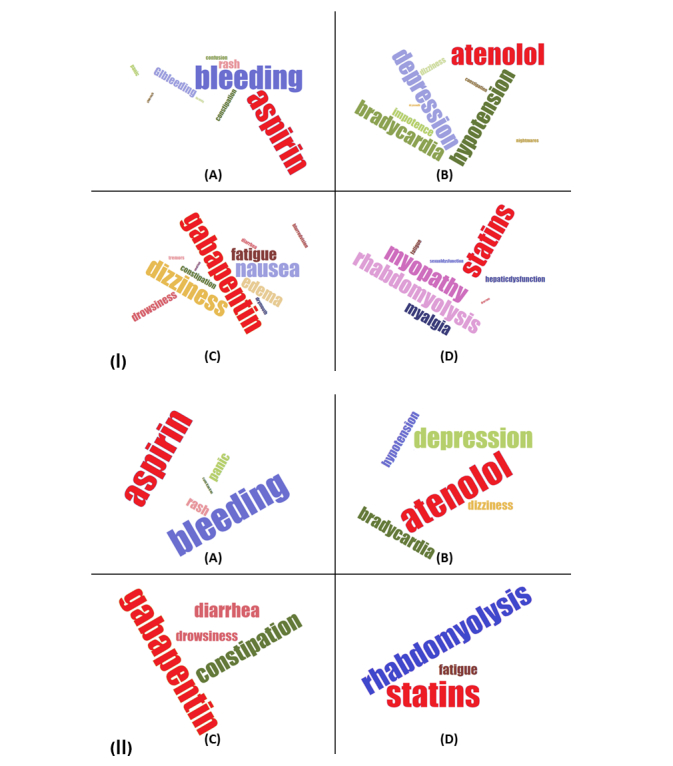Figure 7.

The word cloud representations for “aspirin,” “atenolol,” “gabapentin,” and “statins.” (1) These results are obtained from biomedical articles. Whereas the most frequent adverse dug events for “statins” are “myopathy,” “rhabdomyolysis,” “myalgia,” “fatigue,” and “hepatic dysfunction” as shown in (D), the most frequent ADEs for “atenolol” are “depression,” “hypotension,” “bradycardia,” and “impotence,” respectively (B). (2) These results are extracted from social media. Whereas the most frequent ADEs for “statins” are “rhabdomyolysis” and “fatigue” (D), the most frequent ADEs for “atenolol” are “depression,” “bradycardia,” “hypotension,” and “dizziness,” respectively (B).
